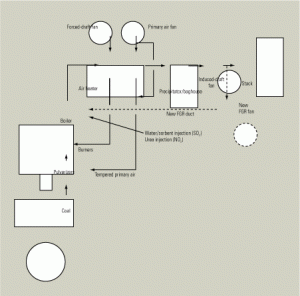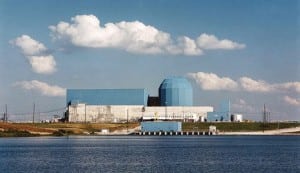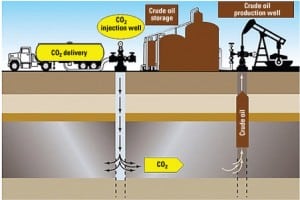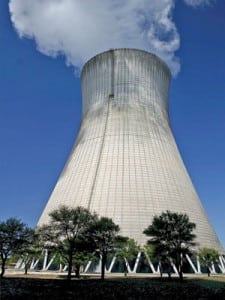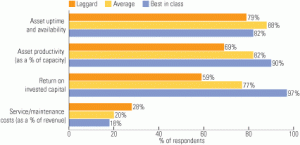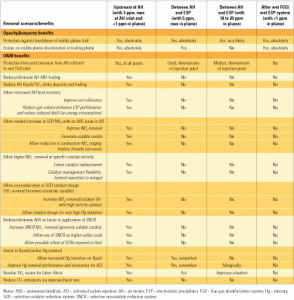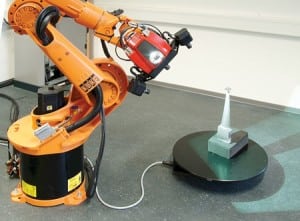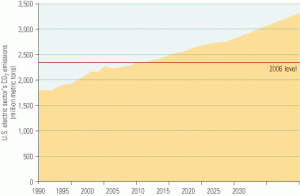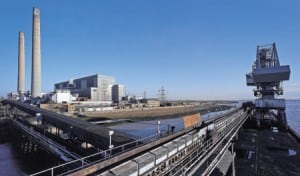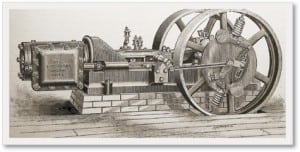In This Issue
-
O&M
Focus on O&M (April 2007)
Control pollution and slagging on a shoestring / Keeping HRSGs young, cool, and clean / Natural air conditioning
-
Legal & Regulatory
How direct access would improve electricity supply
The debate over retail choice has resurfaced, triggering in the minds of many consumer advocates California’s failed deregulation attempt and its fallout—rolling blackouts, bankrupt utilities, and government bailouts with crippling long-term consequences. Before allowing a chorus of “oh no, not again” to cloud the debate, state policy makers should realize that allowing generators to […]
-
Nuclear
Charlie Brown, nukes, and the football
The term "nuclear renaissance" is on the lips of many in the nuclear power industry today, for good reason. The federal executive branch is friendly to nukes; a nationwide shortage of baseload generation looms; the nuclear industry has vastly improved its performance in running its 20th-century plants; and a new generation of plant designs is ready for the road.
-
Coal
Exploring the many carbon capture options
Carbon capture and sequestration have many technical hurdles to leap in coming years. The capture and reuse of CO2 to enhance oil recovery preceded the current clamor over climate change, and that experience is often used as an example that the process is a viable way to handle this greenhouse gas. This article explores options for the first part of the process: CO2 separation and capture.
-
O&M
Adding cathodic protection to a hyperbolic tower
Hyperbolic cooling towers have a distinctive shape, but that form is subordinate to function—natural-draft cooling is cheaper than mechanical-draft cooling. The lower operating costs are offset to some degree by the higher cost of protecting internal tower surfaces from swings in humidity that foster corrosion damage. Learn how one utility added cathodic protection when it repaired its corroded hyperbolic tower, giving it a new lease on life.
-
O&M
Getting to the root of lube oil degradation problems
Doctors and engineers realize that solving a health problem is better done by identifying and eliminating its cause than by treating its symptoms. For machinery, the class of multidisciplinary methods known as root cause analysis (RCA) is an important tool for addressing chronic reliability problems. But RCA often is improperly applied to lubrication-related problems. Read on to learn how to use the technique correctly.
-
O&M
Utilities surpass other industries in asset maintenance practices
Want some good news about your predictive maintenance program for a change? A recent research report by the Aberdeen Group found the electric utility industry benchmarks exceptionally well against other industries in its PDM practices. In fact, the research found that best-in-class companies outperformed industry peers in improving asset availability by up to a three-to-one margin. In a web exclusive, the Aberdeen Group has provided its report for download from powermag.com as a service to our readers.
-
O&M
SO3’s impacts on plant O&M: Part III
Part I of this three-part series (POWER, October 2006) explored the negative impacts of sulfur trioxide (SO3) on the operations and maintenance of back-end plant equipment. Part II (February 2007) listed and quantified the likely and potential benefits of limiting the concentration of SO3 in flue gas to 3 ppm at the entrance to the air heater. This final part describes the characteristics of an optimal SO3 removal technology and details the operating experience of a patented process that has worked successfully at a half-dozen plants for up to three years.
-
O&M
Blades, better than new
The challenge for suppliers of aftermarket turbine blades is that their starting point is an existing blade and nothing else. There are no CAD models, drawings, measurements, tolerances, or inspection data associated with it. However, thanks to the latest in computer tools, a blade now can be digitally recreated to exact specifications and built using the latest design and manufacturing practices. Here’s an inside look at how turbine blades are captured, reconstructed, inspected, and remade to be better than the originals.
-
Coal
At CERA Week 2007, most life was carbon-based
For the past 25 years, Cambridge Energy Research Associates has hosted an annual conference that has drawn the captains of the worldwide oil and gas and electricity industries. The 120 distinguished speakers at this year’s summit attracted more than 2,000 delegates from 55 countries, making it the largest and most diverse ever. Naturally, one of POWER’s contributing editors was there, too; here’s his take on what transpired.
-
Nuclear ambitions
Ten years ago, any self-respecting U.S. utility executive might have been drawn and quartered for publicly promoting a nuclear power revival. How times have changed. Today, more than half of America’s nuclear plants have outsourced their operations to specialty firms, and the prospect of a nuclear renaissance in the U.S. (see Cover Story) is brighter […]
-
Coal
Global Monitor (April 2007)
Npower plans big coal plant in UK / Berkeley boffins make thermoelectric discovery / Rinspeed’s roadster: Fast, fun, and green / Dead chickens, the weirdest renewable / Siemens celebrating three big deals / Nevada Power picks P&W, CH2M Hill / Scuderi’s air-hybrid engine / Ovation for huge new Chinese coal plant / PG&E dips toe into wave power / POWER digest
-
News
This month in POWER…
April 1884 POWER reported on the latest offering from Philadelphia-based Southwark Foundry and Machine Co. (Figure 1) as its lead story. “This is a self-contained, high speed automatic cut-off engine. It has been designed with special reference to simplicity, and solidity of parts, and to heavy and continuous work. 1. The Southwark engine was the […]
-
Commentary
Full-service utilities prove their value
During the past year, the debate over the structure of the nation’s electricity systems has continued at a steady clip. It seems that almost every month a new study or report is issued that proclaims the advantages or disadvantages of one market structure over another. Although a report or study may have value, the Community […]


